If you are planning your trip to Japan, you are probably thinking of including a visit to Hiroshima, but what is there to see in this city today? We all know Hiroshima for that fateful day; the explosion of an atomic bomb that left thousands dead and led to many years of illnesses as a result of radiation.
What remains there today that makes so many people want to visit? The memory of something that NO ONE should EVER forget.
A park, with its various buildings, is a beautiful tribute to the victims, and a museum serves as a history lesson to ensure such events are never repeated. If one thing is clear after this emotional visit, it is that the use of atomic bombs must be eradicated.
At 8:15 a.m. on August 6, 1945, the Enola Gay plane piloted by Colonel Paul W. Tibbets dropped the first atomic bomb on a civilian population, Hiroshima.
This uranium-235 bomb, wrongly named “little boy,” exploded 600 meters from the city, producing a column of smoke 6 km high, and reaching a temperature that destroyed everything and took the lives of thousands of people.
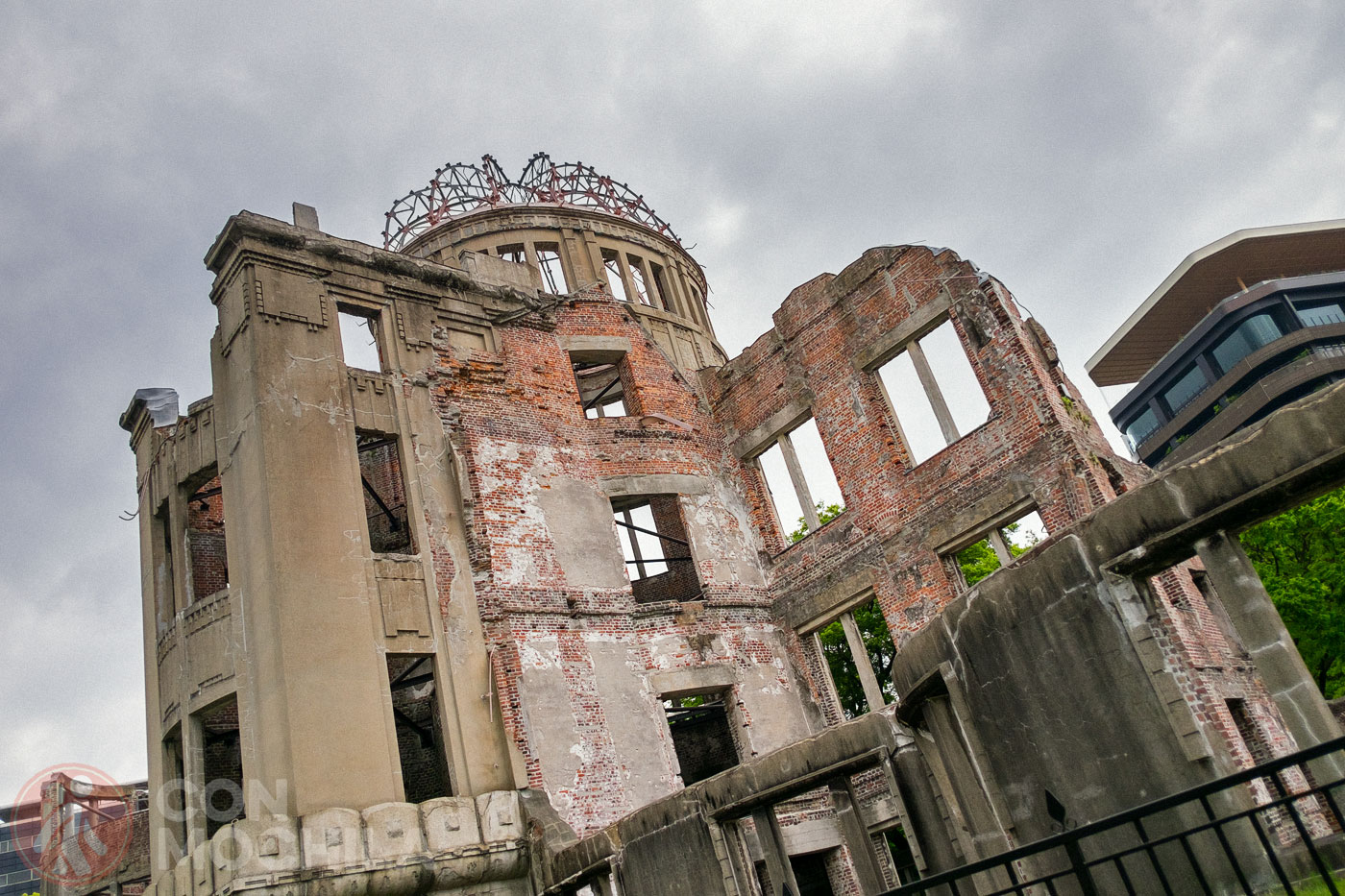
The bombing of Hiroshima, along with that of Nagasaki three days later, meant the surrender of Japan and the end of World War II, but the consequences of the explosion and radioactivity lasted for years, slowly killing many more people.
European citizens, along with those from many other countries, do not need a visa to visit Japan for tourism purposes. You can find detailed information in the previous link regarding the requirements for obtaining the stamp that allows you to up to 90 days.
It goes without saying how important it is to travel to Thailand with a good insurance. We were the first ones to offer the famous 5% discount on IATI Insurance, but you also have it available with Heymondo Travel Insurance.
Follow the links below to get a discount on their website:
While many hotels, guesthouses, and restaurants in Japan offer free Wi-Fi, some travelers prefer or need a constant connection.
We’ve included details on obtaining a eSIM Japan card and make the most with its affordable prices. Now also with information about eSIM Japan with unlimited data.
Hiroshima International Airport (HIJ) is the main entry point to Hiroshima, connected by bus or train to Hiroshima city centre. From Kyoto, it takes approximately 1.5 hours as the airport is approximately 800 km away.
There are trains in all directions to and from JR Hiroshima Station, which is located in the city centre, making it easy to access other cities. Remember that if you plan to cover a lot of train miles, it may be worth getting a Japan Rail Pass.
Buses are a very cheap option for travelling. You can get there by bus from cities such as Tokyo, Osaka and Kyoto (Hiroshima bus center)
To get to Hiroshima from Tokyo there are several trains (the journey lasting just under 5 hours).
Osaka is located about 340 km from Hiroshima, a little less than 2 hours depending on the train you take. In addition, the two cities are connected by regular bus lines. If you take the bus, the time may vary depending on traffic.
The Peace Memorial Park is the nerve center of Hiroshima, an area where everything related to the atomic bomb is found: museums, remains, stories of survival and tributes to the victims. It is an intense visit that gives you goosebumps on more than one occasion, but it is necessary to remember the past.
Below you will find some information about the most emblematic buildings and monuments of the park, a place that leaves no one indifferent.
A-Bomb Dome, this iconic building located just a few meters from the epicenter was one of the few structures still standing after the explosion. Although a few walls and the dome are the only things that remain of the A-Bomb Dome, they are a reminder of the horror of an atomic bomb, a symbol of peace, and a call to abolish nuclear weapons.
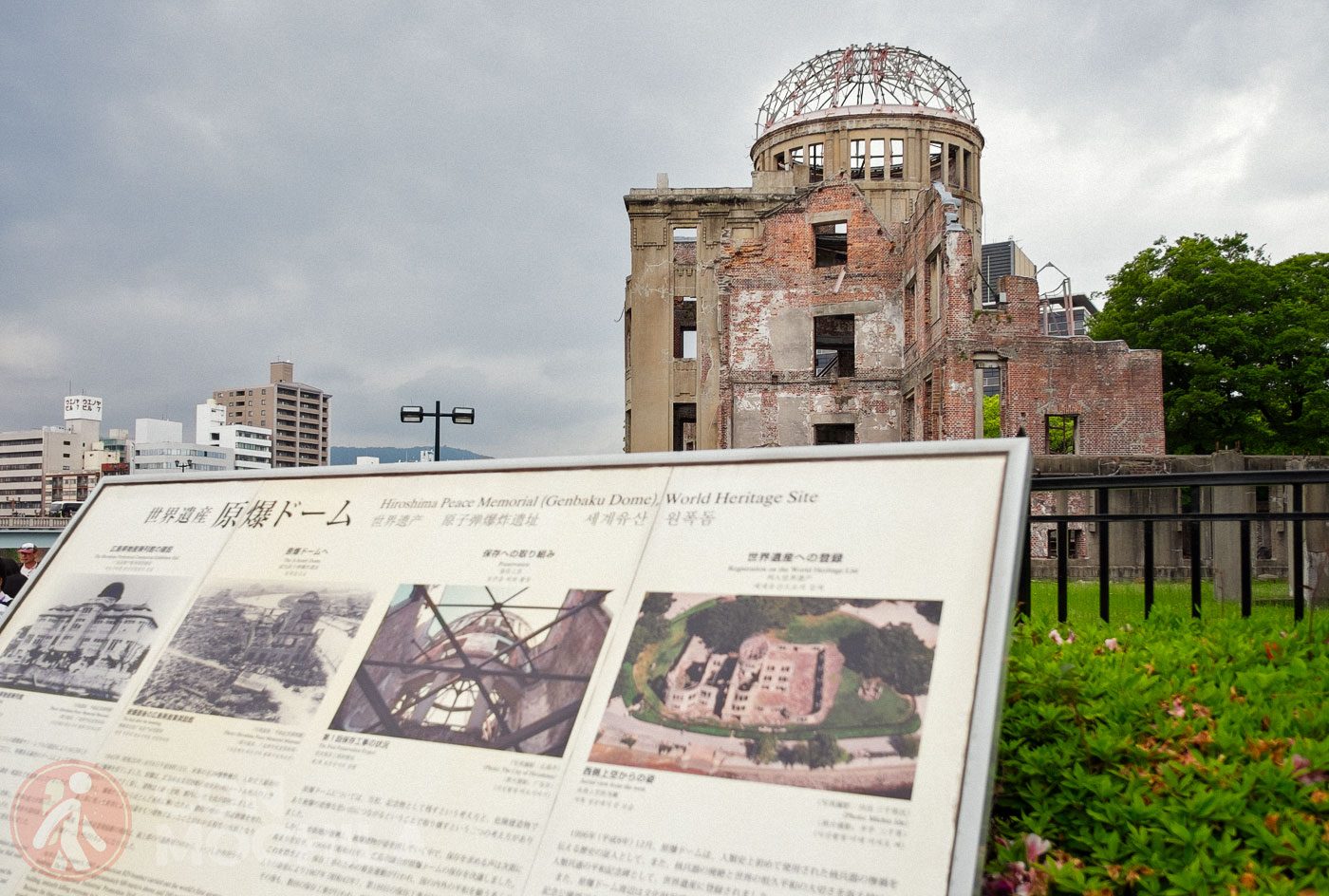
Since 1996 it has been a World Heritage Site and is one of the most photographed places in Hiroshima.
This memorial wall was built in 2002 by architect Tange Kenzō, a space where victims are remembered and survivors tell their personal stories. The design of this spiral wall is intriguing.
As you walk along it, you gradually descend, drawing closer to the central point where there is a fountain symbolizing the moment of the explosion.
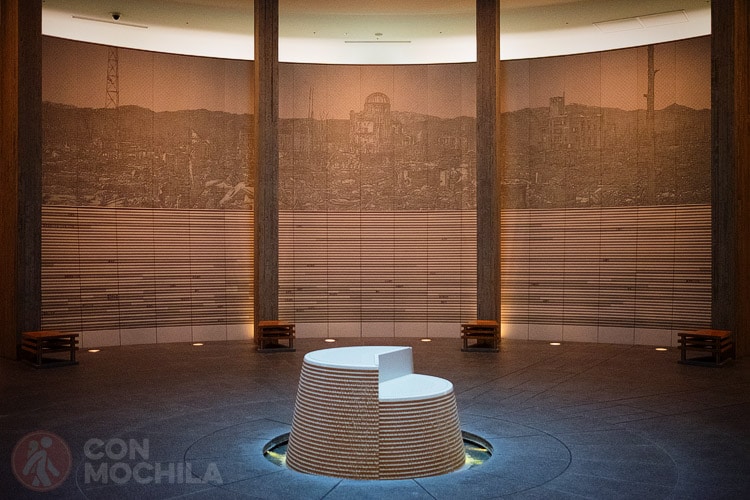
The Peace Memorial Museum provides an overview of the historical events leading up to the dropping of the atomic bomb, the moment of the explosion, and its aftermath.
The exhibit showcases related artifacts and surviving objects, along with victim testimonies and extensive information about nuclear weapons. The display also emphasizes calls for the abolition of these weapons.
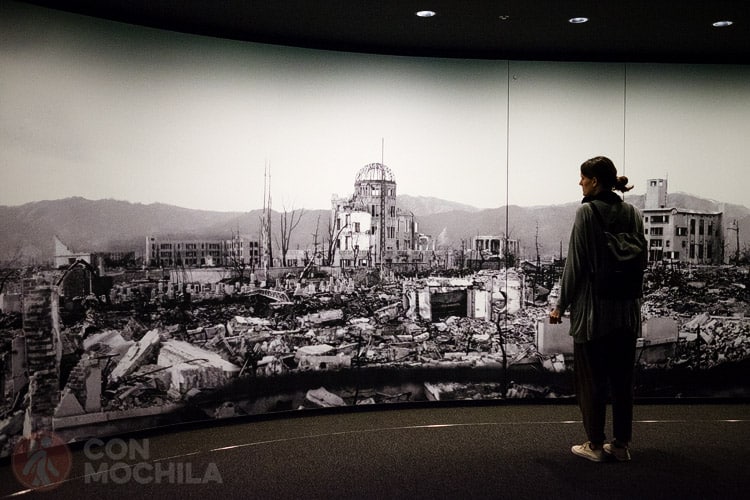
I admit that the entire visit to Hiroshima’s Peace Memorial Park was very emotional, but seeing a group of schoolchildren singing in memory of the victims at the Children’s Peace Monument was beyond my ability to hold back tears.
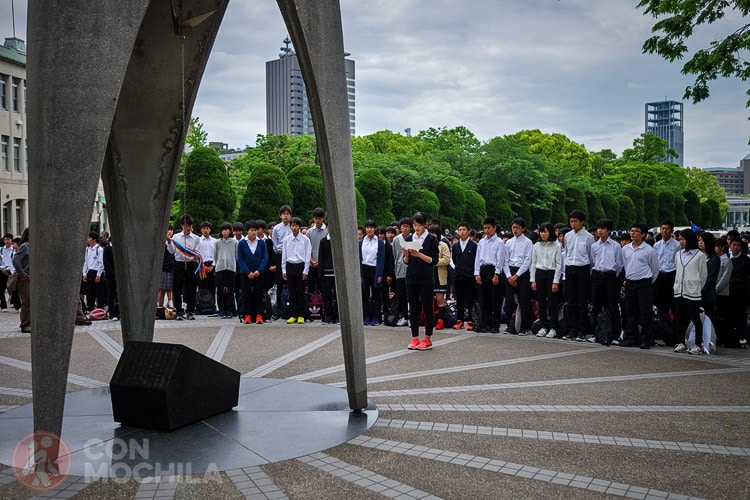
This monument, to which schools continue to send hundreds of paper cranes, commemorates Sadako Sasaki and the thousands of children who died during and after the explosion.
This eternal flame symbolizes hope and the desire to achieve world peace. Also designed by Tange Kenzō, the pedestal that holds the fire represents two hands joined at the wrist with the palm facing the sky.
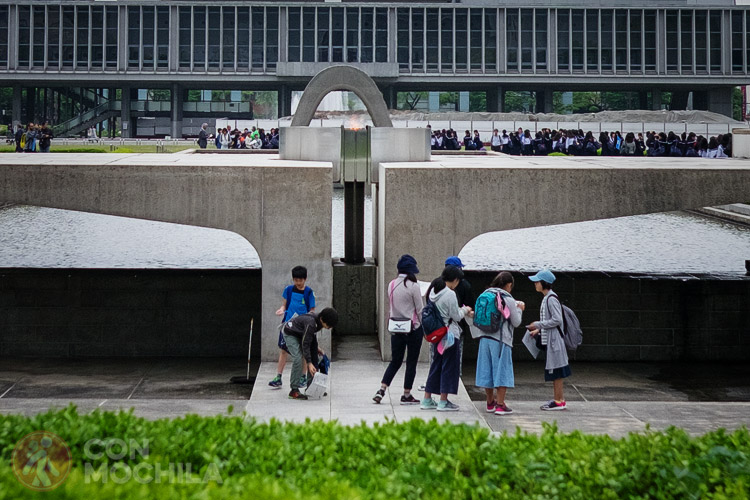
The flame, which began to burn in 1964, will continue to burn until nuclear weapons disappear from the face of the earth.
With the inscription “Let all the souls here rest in peace; for we shall not repeat the evil” this arched cenotaph symbolizes the desire to welcome the souls of the victims, whose names are inscribed on the central stone.
Another of the many tributes and reminders at Peace Memorial Park which serve as lasting symbols to ensure we never forget, visiting this site is almost essential when in Japan.
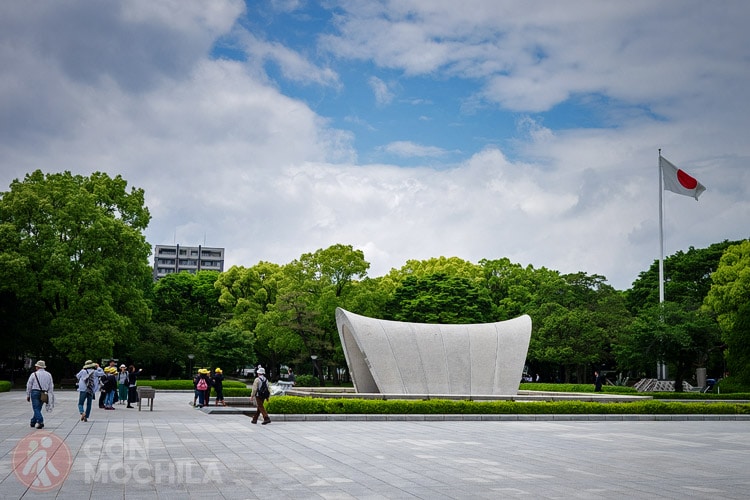
If you’ve decided to spend at least a full day in the city, you can stop by Hiroshima Castle in the afternoon. It was completed in the 1590s under the orders of Mori Trumoto, although the exact date is unknown, and during the Edo period it occupied a large area surrounded by three moats and the Otagawa River.
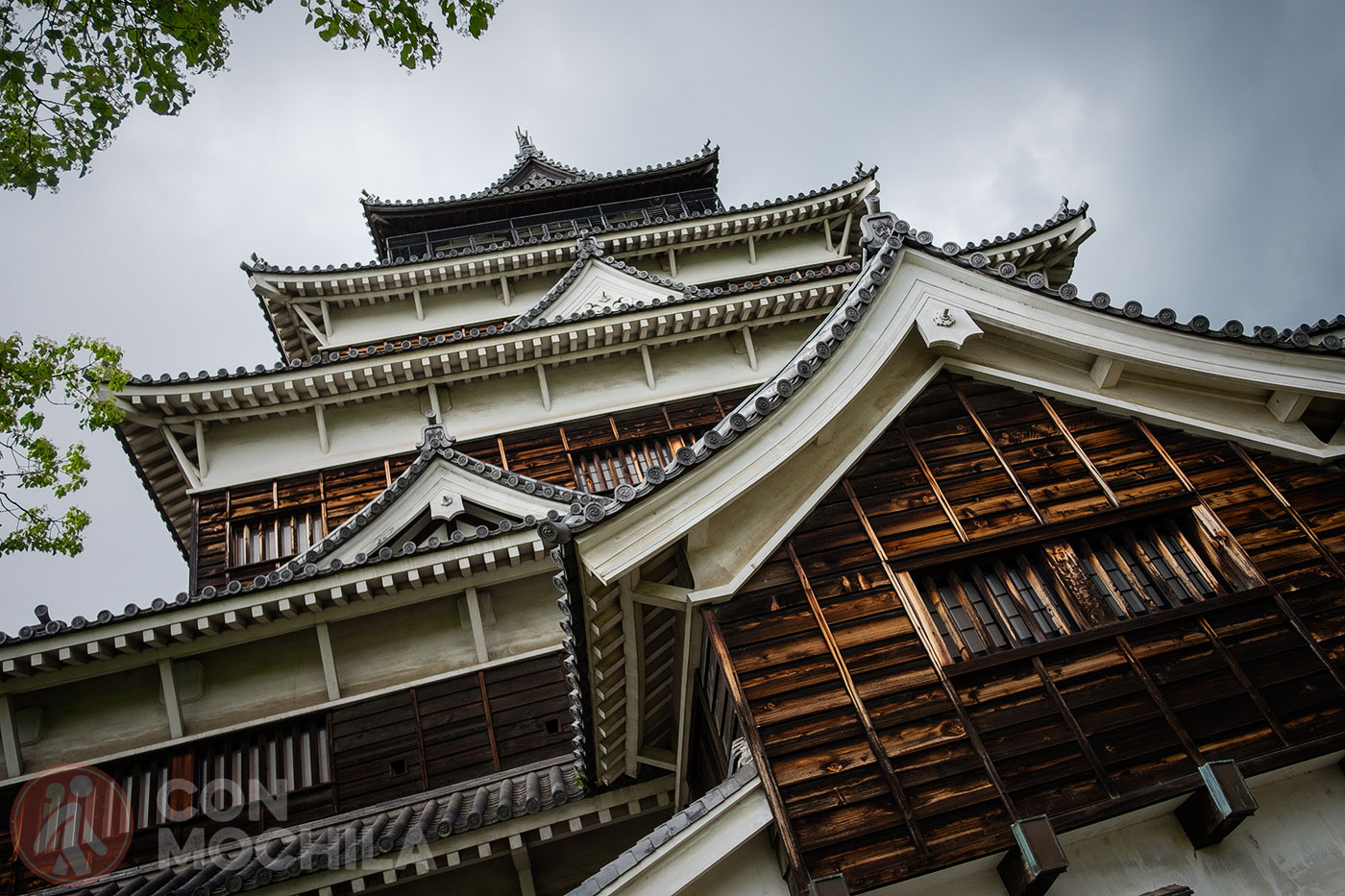
On August 6, 1945, it was completely destroyed by the atomic bomb and was rebuilt in 1958 as an exhibition site for historical artifacts. Inside it is now like a five-storey museum with views of the city from the top.
The entrance fee is 370¥. If you want to see more castles, don’t miss Once upon a time… five castles of Japan.
Hiroshima is a city that literally rose from its ashes and today is a beautiful destination. Although there may be fewer sights compared to other places, apart from the Peace Memorial Park, it’s a city where simply taking a walk is always enjoyable.
Walking through its streets we came across the Yuhua Garden, a peculiar and peaceful garden very close to the river.
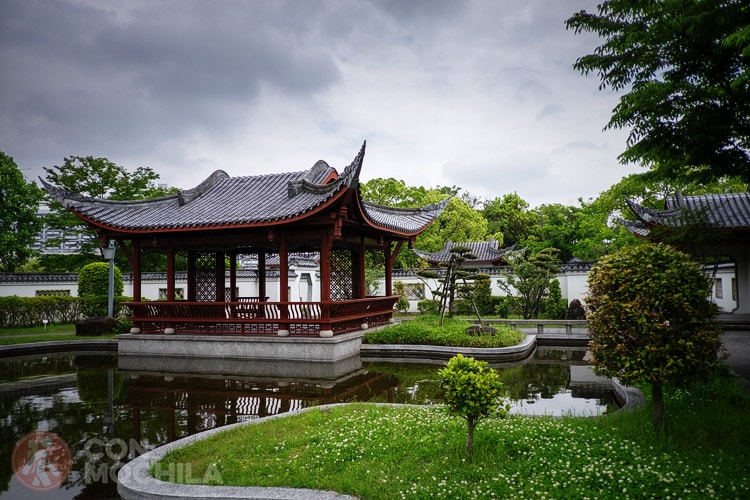
In Hiroshima you can also visit the art museum, the Shukkei-en garden, or take a boat ride along the Motoyasugawa River.
Following our own Japanese tradition, we looked for a place to eat okonomiyaki in Hiroshima. Nagata-ya restaurant did not disappoint and became one of the most memorable dining experiences of our entire trip to Japan, and also had vegetarian options. Wow! I would pay for one of those right now.
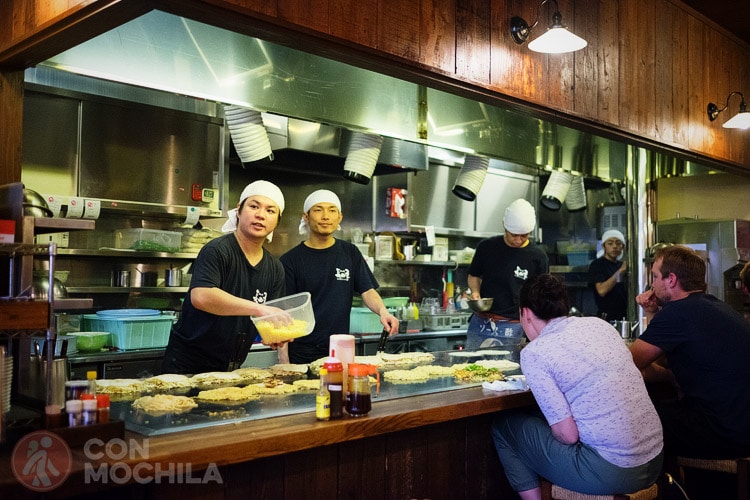
We were left wanting to try Okonomi-mura, which also looked very good.
On this guided tour of Hiroshima you will discover how, after the horrors and impact of World War II, the city rose again and became a symbol of forgiveness and reconciliation. From Nishi Kamiyako Station, a guide will accompany you to discover places such as the Hiroshima Peace Museum, the Orizuru Tower or the Genbaku Dome.
This tour of Hiroshima and Miyajima Island, is perfect for discovering all the corners of this city and the nearby island. You will visit places such as the Peace Memorial Park and the Children’s Monument before taking a ferry to Miyajima to discover a floating shrine or the Daigan-ji temple.
To complement your visit to this historic city and get to know it in a different way, we recommend a night tour of Hiroshima. A guide will accompany you for three hours to taste our beloved okonomiyaki in a traditional restaurant and you will also be able to try the famous sake. You can also try this small group walking tour visiting the historical areas of Hiroshima.
In Hiroshima we decided to stay at the Guest House com inn Hiroshima a multi-storey building with simple but very clean rooms. The best thing about the place was the common area, where you can take a photo in a kimono or pin your place of origin on a world map, and have coffee or tea sitting on the sofa. For a double room with a private bathroom we paid $45 per night.
You can also take a look at the recommendations we have detailed below:
If you are not going to sleep in Hiroshima and are only going to spend part of the day in the city, a good option to get around is by using the tram. From the bus station you can catch a tram and get very close to the Peace Memorial Park area (MAP AT: Hiroshima Electric Railway).
Click on the image and it will take you to a new Google Maps window with all the points of interest to travel around Hiroshima.